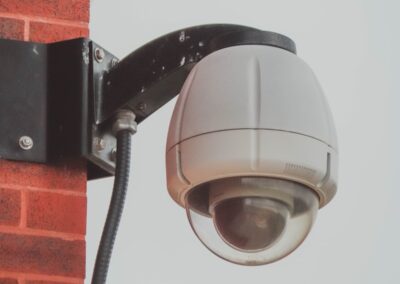Understanding the Threat of Ransomware on IoT Devices
The WannaCry Ransomware Exploit
In the evolving landscape of cybersecurity, preventing ransomware attacks on IoT devices is becoming increasingly critical for businesses worldwide. The WannaCry ransomware attack in 2017 highlighted the vulnerabilities within IoT networks, showing how quickly and extensively such attacks can spread. For business leaders in Riyadh, Dubai, and across Saudi Arabia and the UAE, understanding the mechanisms of such attacks and implementing robust preventive measures is essential for safeguarding their operations.
The WannaCry ransomware exploited a vulnerability in the Windows operating system, known as EternalBlue, which allowed it to propagate rapidly across networks. Once it infiltrated a system, WannaCry encrypted the files on infected devices, demanding a ransom for their release. While initially targeting traditional IT infrastructure, the attack quickly spread to IoT devices due to their interconnected nature and often lax security measures. For instance, medical devices, smart cameras, and industrial control systems became unintended vectors for the malware, exacerbating the impact and reach of the attack.
This attack underscored the urgent need for comprehensive security protocols specifically tailored to IoT environments. Unlike traditional IT systems, IoT devices often lack robust security features and are not regularly updated, making them prime targets for cybercriminals. In smart cities like Dubai, where IoT devices are integral to urban infrastructure, the potential disruption from ransomware attacks can be particularly severe, affecting public safety, transportation, and essential services.
Adopting Preventive Measures to Secure IoT Devices
To prevent ransomware attacks on IoT devices, organizations must adopt a multi-faceted approach that includes both technological solutions and best practices. One of the most crucial steps is ensuring that all IoT devices and associated systems are regularly updated with the latest security patches. This helps to close vulnerabilities that could be exploited by ransomware like WannaCry. For instance, businesses in Riyadh and Dubai can implement automated update mechanisms to ensure that their IoT devices are always running the latest firmware and security patches.
Another vital measure is network segmentation. By dividing the network into isolated segments, organizations can contain the spread of malware within a specific segment, preventing it from moving laterally across the entire network. In the UAE, where smart city initiatives involve numerous interconnected IoT devices, segmenting the network can significantly enhance security. For example, separating critical infrastructure systems from less sensitive networks can help protect essential services from being compromised during an attack.
Deploying advanced security solutions, such as Artificial Intelligence (AI) and Machine Learning (ML), can also enhance the protection of IoT devices. AI and ML can analyze network traffic in real-time, detecting anomalies and potential threats before they can cause significant damage. For instance, an AI-driven security system could identify unusual patterns of data access or transmission that might indicate a ransomware attack in progress, enabling immediate containment and mitigation measures. In Saudi Arabia, AI-based cybersecurity solutions are being explored to safeguard critical infrastructure and public services from evolving cyber threats.
Strategic Benefits of Robust IoT Security
Driving Business Success through Enhanced Cybersecurity
For organizations in Saudi Arabia and the UAE, investing in robust IoT security measures offers substantial strategic benefits. Enhanced cybersecurity not only protects sensitive data and critical infrastructure but also drives business success by ensuring operational continuity and building stakeholder trust. In competitive markets, where reliability and security are key differentiators, robust IoT security can be a significant advantage.
Effective IoT security measures enable businesses to maintain the integrity and availability of their systems during cyber incidents. By preventing ransomware attacks and minimizing their impact, organizations can avoid costly downtime and maintain productivity. For instance, in the healthcare sector, where IoT devices are used for patient monitoring and medical diagnostics, ensuring continuous operation is crucial for patient safety and care quality. A hospital in Dubai that implements advanced IoT security measures can protect its critical systems from disruption, maintaining trust and confidence among patients and regulatory bodies.
Moreover, robust IoT security enhances an organization’s reputation and stakeholder confidence. By demonstrating a commitment to cybersecurity, businesses can build trust with customers, partners, and regulators. For example, a financial institution in Riyadh that invests in comprehensive IoT security can reassure its clients of the safety of their financial data, fostering long-term loyalty and engagement. This proactive approach to cybersecurity can also attract new business opportunities, as organizations seek partners with strong security practices.
Leadership and Strategic Implementation of IoT Security Measures
Effective leadership is essential for the successful implementation of IoT security measures to prevent ransomware attacks. In Saudi Arabia and the UAE, executive coaching services are helping business leaders develop the skills necessary to navigate the complexities of IoT security and cyber risk management. Leaders equipped with a deep understanding of cybersecurity strategies are better positioned to drive innovation and operational excellence within their organizations.
Executive coaching focuses on enhancing leadership and management skills, enabling leaders to make informed decisions about IoT security investments and policies. For instance, coaching programs may cover topics such as risk assessment, strategic planning, and technological innovation, all of which are critical for successful IoT security implementation. By fostering a culture of continuous learning and adaptation, organizations can stay ahead of cybersecurity threats and leverage advanced technologies to protect their assets.
Additionally, executive coaching can help leaders understand the ethical and security implications of IoT deployments. With the increasing prevalence of cyber threats, it is essential for leaders to prioritize data security and privacy. Coaching programs can provide insights into best practices for developing and implementing IoT security measures, thereby building a robust security framework that safeguards organizational assets and enhances stakeholder trust.
Future Trends: The Metaverse and Generative AI
The future of preventing ransomware attacks on IoT devices is closely tied to emerging technologies such as the Metaverse and Generative AI. By leveraging these cutting-edge technologies, organizations in Riyadh, Dubai, and beyond can unlock new opportunities for innovation and growth. Generative AI, which involves the use of AI to create new content and solutions, can be applied to IoT security to enhance threat detection, develop advanced mitigation strategies, and optimize response times.
For example, generative AI can simulate various cyber-attack scenarios and predict the outcomes of different security measures, enabling organizations to make data-driven decisions with greater confidence. In the context of smart cities, generative AI can help design more resilient urban infrastructures, optimize energy usage, and improve public services, contributing to the overall quality of life.
The Metaverse, a virtual world where users can interact with digital environments and each other, offers another avenue for IoT security innovation. By integrating IoT security measures with the Metaverse, organizations can create immersive and interactive training environments that enhance readiness and situational awareness. For instance, businesses can use virtual reality (VR) and augmented reality (AR) to provide real-time incident simulations and analytics, helping security teams make informed decisions and collaborate more effectively.
In conclusion, preventing ransomware attacks on IoT devices is essential for optimizing security and achieving business success. By adopting advanced technologies, fostering strategic leadership, and exploring innovative solutions like generative AI and the Metaverse, organizations in Saudi Arabia, the UAE, and beyond can enhance their operational efficiency, drive innovation, and achieve sustainable growth.
—
#RansomwareAttacks #IoTSecurity #WannaCry #PreventiveMeasures #BusinessSuccess #SaudiArabia #UAE #Riyadh #Dubai #ArtificialIntelligence #Blockchain #ExecutiveCoaching #GenerativeAI #ModernTechnology #LeadershipSkills #ManagementSkills #ProjectManagement































